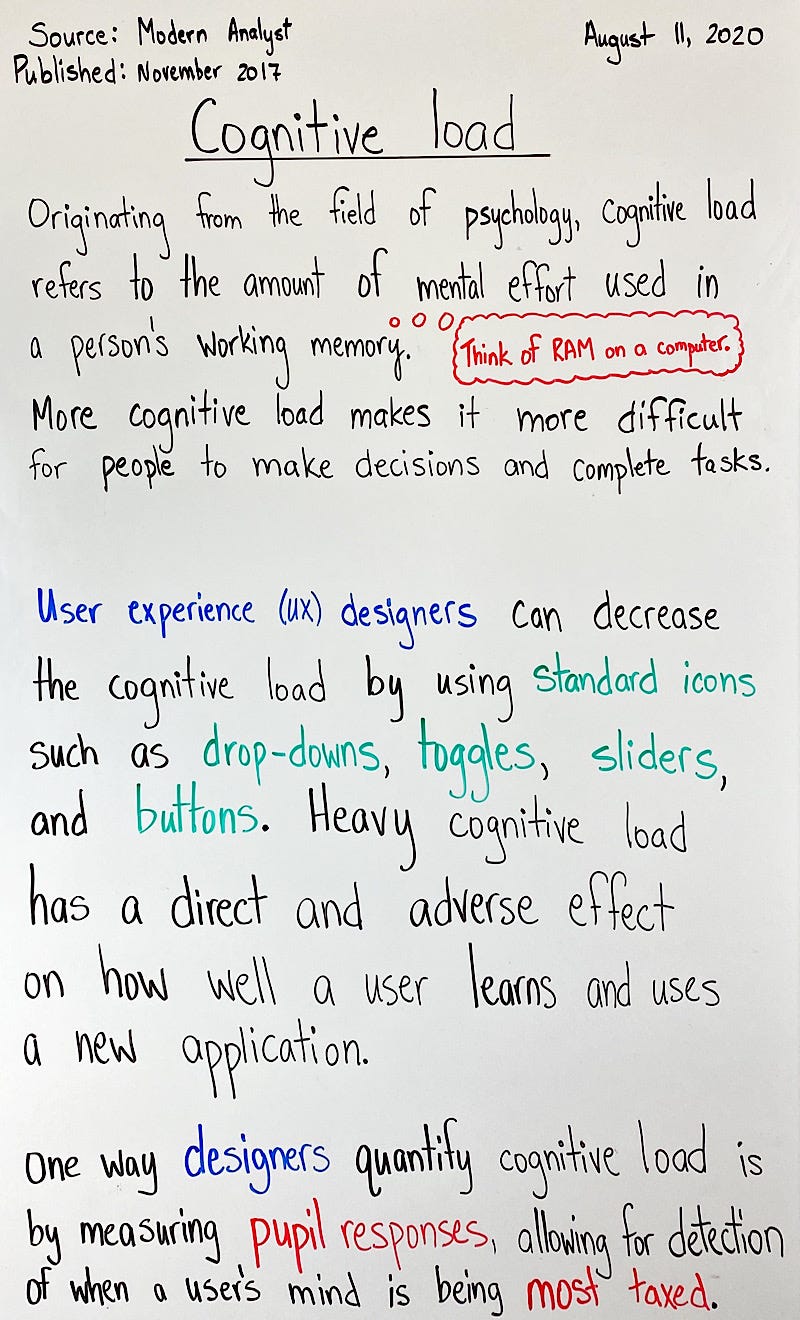August 11: Cognitive load
Here's how your pupil responses help UX designers create better websites.

Source: Modern Analyst
Published: November 2017
Cognitive load
Circulated: August 11, 2020
Originating from the field of psychology, cognitive load refers to the amount of mental effort used in a person’s working memory — think of RAM on a computer. More cognitive load makes it more difficult for people to make decisions and complete tasks.
User experience (UX) designers can decrease the cognitive load by using standard icons such as drop-downs, toggles, sliders, and buttons. Heavy cognitive load has a direct and adverse effect on how well a user learns and uses a new application.
One way designers quantify cognitive load is by measuring pupil responses, allowing for detection of when a user’s mind is being most taxed.
------------
Did you enjoy the fact today?

